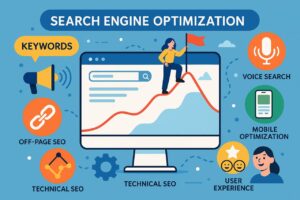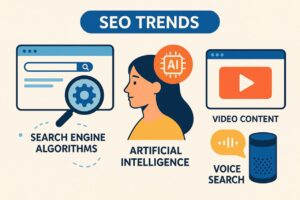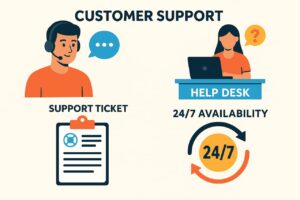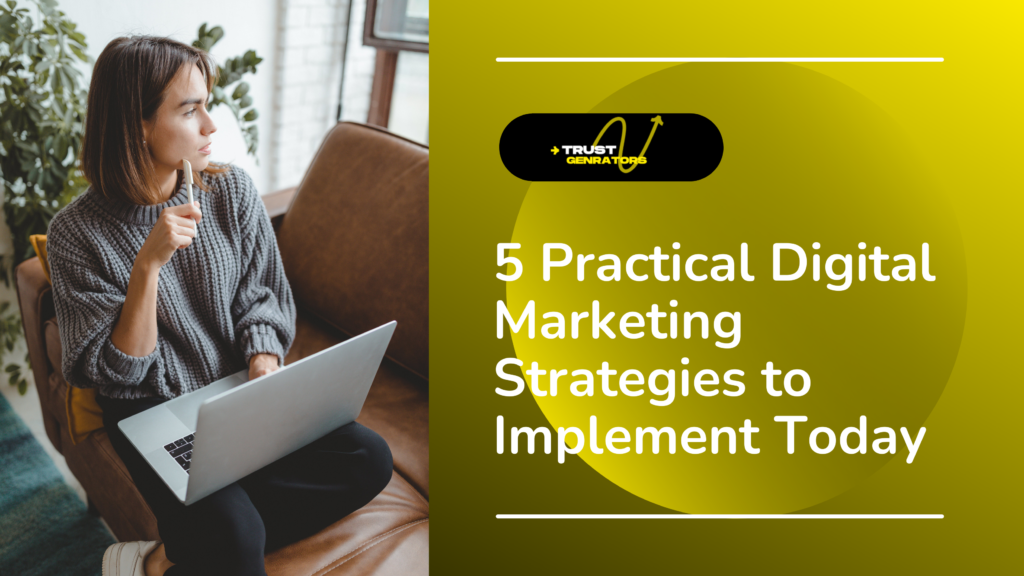I. Search Engine Optimization (SEO)
A. Importance of SEO in Digital Marketing
Search Engine Optimization (SEO) is like a friendly handshake with search engines. It is the process of improving your website so that it ranks better in search results. When you think about it, every time someone searches for something online, they are looking for answers. Ranking high in search results increases your chances of being seen and clicked on. Over time, effective SEO can lead to more traffic and higher credibility for your brand.
B. Key Components of SEO
To get the most out of SEO, you’ll want to focus on three main components:
- On-page SEO: This is all about what you can control on your own site. Think of content and keywords as your best friends. Use relevant keywords naturally within your content, and make sure it’s informative and valuable.
- Off-page SEO: This involves building links from other reputable sites back to yours. Having links from well-respected websites boosts your site’s authority. It’s like having endorsements from trusted sources.
- Technical SEO: This refers to how well your website is structured and how it performs. A fast-loading website that’s easy to navigate is essential. Imagine visiting a cluttered store versus a neatly organized one; you would prefer the latter!
C. Current SEO Trends
Staying updated with SEO trends can keep your strategy fresh and effective:
- Voice search optimization: As more people use virtual assistants like Siri or Alexa, optimizing for voice searches is becoming essential. Think about how you would verbally ask a question, and tailor your keywords accordingly.
- Mobile-first indexing: Google, among others, primarily uses the mobile version of a website for indexing and ranking. Ensure your site looks great and works well on mobile devices.
- User experience (UX): A good user experience can positively influence your SEO. If visitors enjoy navigating your site, they are likely to stay longer, which improves your rankings.

II. Content Marketing
A. Understanding Content Marketing
Content marketing is all about creating valuable and relevant content to attract and engage your audience. From blogs to infographics and videos, content is the lifeblood of your online presence. It guides prospects through their journeys, helping them to solve problems or make informed decisions.
B. Creating Compelling Content
You can’t rush this part; creating compelling content comes from truly understanding your audience:
- Know your audience: What do they care about? What questions are they asking? Tailoring your content to answer those questions is key.
- Craft engaging headlines: Your headlines need to grab attention. A well-crafted headline can make the difference between someone clicking on your content or scrolling past.
- Incorporate storytelling: Everyone loves a good story. Using storytelling elements in your content can make it more relatable and memorable.
C. Distribution Channels for Content
Once you’ve created your fantastic content, it’s time to share it:
- Social media platforms: Share your content on social media where most of your audience hangs out. Each platform has its unique style, so tailor your content accordingly.
- Email marketing: Don’t underestimate the power of a good email campaign. Sending updates to your subscribers keeps them engaged with your brand.
- Collaborations: Working with other content creators can broaden your reach. It’s like sharing the spotlight and gaining access to a new audience.

III. Social Media Marketing
A. Benefits of Social Media Marketing
Social media is a powerful tool to build awareness, engage with customers, and drive traffic:
- Brand awareness: Regularly posting updates about your products or services keeps your brand fresh in people’s minds.
- Engagement: Social media allows you to interact directly with your customers. Responding to comments or messages can build loyalty and trust.
- Driving traffic to your website: Sharing enticing previews or links to your websites can encourage clicks and visits.
B. Most Effective Social Media Platforms
Choosing the right platforms can make all the difference:
- Facebook: With its broad audience, Facebook is great for targeting a diverse range of consumers.
- Instagram: Known for its visual appeal, Instagram is perfect for storytelling and showcasing your products through eye-catching images and videos.
- LinkedIn: This platform excels in networking and B2B marketing. It’s ideal for businesses looking to connect with other businesses.
C. Strategies for Effective Social Media Campaigns
To maximize your social media presence:
- Consistent branding: Your messaging should reflect your brand’s voice across all platforms.
- Utilize analytics: Use the insights from social media analytics to see what works and what doesn’t, then adjust your strategy accordingly.
- Engage with followers: Create interactive content like polls and Q&A sessions to foster discussions and make your followers feel valued.

IV. Email Marketing
A. Importance of Email Marketing
Despite the rise of social media, email marketing remains a powerful channel:
- Direct communication: Emails provide a personal touch, allowing you to speak directly to your audience in their inboxes.
- High ROI: Email marketing typically boasts a higher return on investment than many other marketing channels, making it an effective choice for businesses of all sizes.
- Personalization: Tailoring content and offers can strengthen customer relationships and loyalty.
B. Building an Email List
Growing your subscriber base is foundational to any email marketing strategy:
- Subscriber techniques: Use simple sign-up forms on your website and promote them on social media.
- Lead magnets: Offering something of value, like an ebook or discount, can incentivize people to join your list.
- List maintenance: Regularly clean your email list to remove inactive subscribers, ensuring better engagement rates.
C. Crafting Effective Email Campaigns
Writing great emails takes practice:
- Attention-grabbing subject lines: Your subject line is your first impression; make it count!
- Engaging content: Write in a friendly and conversational tone. Relate to your audience and provide valuable content.
- Clear calls to action: Always include a simple and direct call to action so your readers know what you want them to do next. Testing different approaches can help refine your campaigns.

V. Pay-Per-Click Advertising (PPC)
A. Overview of PPC Advertising
PPC is an online advertising model where you pay for each click on your ad:
- How it works: You set a budget and only pay when someone clicks on your ad, making it a cost-effective option if done right.
- Benefits: PPC can give you immediate visibility for certain keywords, helping drive traffic quickly.
- Comparison: While organic strategies might take time to build, PPC allows you to see results faster.
B. Setting Up a PPC Campaign
Getting started with PPC can be straightforward:
- Choose the right platform: Depending on your audience, Google Ads or social media platforms like Facebook or Instagram may be your best bets.
- Keyword research: Identifying the right keywords is crucial for targeting the right audience.
- Ad copy and visuals: Ensure that your ad copy is clear and compelling, paired with eye-catching images to grab attention.
C. Measuring PPC Success
Monitoring your campaigns is vital for continued success:
- Key performance indicators (KPIs): Keep an eye on metrics like click-through rates, conversion rates, and cost-per-click to judge your campaign’s effectiveness.
- Adjustments based on data: Analyzing performance allows you to tweak your campaigns for better results.
- Budget management: Keeping track of your spending and return on investment helps ensure you’re using your budget efficiently.

Conclusion
Implementing these five digital marketing strategies can significantly impact your online presence and broaden your reach. As trends evolve, being adaptable is crucial for success. Don’t hesitate—start integrating these strategies today and watch your digital marketing efforts flourish!
Frequently Asked Questions (FAQs)
- What digital marketing strategy is best for beginners?Starting with content marketing and social media can be rewarding, as they require minimal investment and provide valuable learning experiences.
- How much budget should I allocate for PPC advertising?It largely depends on your overall marketing budget, industry, and goals. Start small and scale as you see results.
- Can I effectively use social media without a large following?Yes! Engaging content can attract attention and grow your following over time, regardless of your starting point.
- How often should I update my website’s SEO?Regular updates are beneficial; aim to review your SEO settings every few months or when you create new content.
- What types of content should I focus on for my audience? Focus on a mix of educational, entertaining, and promotional content tailored to your audience’s interests and pain points.



